In the distant past, ancient artists painted on rocks to invoke the help of spirits, hoping they would heal a wounded tribesman or grant a successful hunt. Today, thanks to the well preserved ancient rock paintings in the natural "galleries", we can observe scenes from the lives of people who lived centuries and even millennia ago. One of such unique examples of entrancing ancient art can be found at the very heart of Tanzania.
The rock art of Africa
There are numerous notable rock art sites in Africa. However, only about a dozen of them are truly outstanding in their cultural and archaeological significance. Most of those well-preserved and remarkably expressive sites are located in the Sahara Desert, as well as in the south and east of the continent, in places dominated by rocky mountains or dry sands (which indicate a climate that isn’t too humid.)
In Eastern Africa, there are two such sites near the Great Rift Valley: Kondoa in Tanzania and Chongoni in Malawi. Both are UNESCO World Heritage sites. Kondoa is located in the area of the same name, near the village of Kolo, in the central region of the country, where the Tanzanian capital Dodoma is located. You’ll find it about halfway from Arusha to Dodoma on the A104 highway.
As you go off the road and up to the rocky ledges, you will find natural stone "balconies" with overhanging walls on which the famed ancient drawings have been preserved. Typical rock art here includes fine-line red ochre depictions of men and various animals running, hunting, or performing other activities. According to the most daring estimates, several of these drawings might be more than 20,000 years old!
Kofi Annan, the renowned Ghanaian-born 7th Secretary General of the United Nations, said that the African rock art is one of the oldest monuments of human thought on earth. Such prehistoric art preserves the stories that sprouted from the very beginnings of the human imagination. Opportunities to peek into the primitive world are presented to the adventurers who travel to those remarkable ancient rock-art sites.
What is depicted on the drawings of Kondoa?
The Masai escarpment is one of the places in Tanzania where amazing examples of ancient rock art can be found. Right next to it there is a vast valley which was roamed by the Maasai tribes of warrior herders , who used to drive their cattle across the fertile land. Apart from the Maasai, other peoples lived in these generous lands as well. Here the ancient artists depicted their simple lives on the rock walls. In those drawings we see hunting scenes, rain-calling rituals, animals peacefully grazing in the savanna, and much more. The drawings are truly fascinating to look at and our imagination is often captured by the almost magical imagery as we gaze at those ancient artistic creations. The silhouettes of bizarre creatures drawn as if by an unskilled child's hand almost immediately allow us to recognize familiar animals such as giraffes, antelopes and, less frequently, elephants and hippopotami. But when more people appear in the sketches, it's not so easy to make out the details and understand what's going on.
The drawing above depicts three people holding a long object that looks like a stick. But what is it? They also have some huge objects on their heads. Maybe the villagers are carrying wicker baskets, as is still common in the countryside and can even be spotted in the cities today? Sometimes without special knowledge you can't even guess what the people depicted are up to. What are they holding in their hands? What are they doing? Why do many of them have disproportionately large heads? Are those mops of hair, or did the artists mean something else and their messages carried some supernatural meaning?
While it is challenging to decipher the meaning of those drawings, many of them are understandable to specialists and have a logical interpretation. For example, the seven tall free-standing figures holding long sticks in their hands are women with pestles for grinding. Such wooden mortars and pestles are displayed in a nearby museum, which has preserved a number of various unusual relics. Another very curious and famous painting called "The Abduction" shows a woman in the center, with two men on either side dragging her by the arms, two on the left and two on the right. The ones on the right are wearing masks. They are believed to be men from another tribe who came to kidnap the girl. The two men on the left are trying to stop her from being taken away.
However, it is important to remember that any interpretation of images created by ancient artists remains only an interpretation. There is no guarantee that a man with a stick standing next to an elephant is hunting. It is quite possible that he interacts with the animal in some other way, peacefully. And the widely known abduction scene may be just a dance or some sort of ritual activity. The exact interpretation of the paintings should be left to the scientists who are well acquainted with the life and beliefs of the peoples who once lived in these places. Not much is known for certain: we cannot establish the exact date of when the rock drawings were created, the names of the tribes from which the artists came, or the rituals they displayed. It is a good time to wonder what we know for sure about the drawings at Kondoa. Yet despite the lack of precise information about them, we can still enjoy the minimalist beauty and enchanting appeal of those rock drawings that have reached us through the millennia.
Mysteries and theories of origin
The most plausible estimate today seems to be that the oldest drawings are between five and seven thousand years old. At least, that's what the local museum tells us about their age, citing a generally accepted figure of 6,000 years. The Education, Science and Culture agency of the United Nations, UNESCO, cautiously gives the formulation that the images are at least two thousand years old. However, there are also individual scholars who claim the drawings to be significantly older.
It is impossible to determine the exact age of the drawings. But in Kondoa a number of ancient human sites have been discovered. In those sites archaeologists have found various objects such as beads, objects made from stone, and various pottery. Radiocarbon analysis gives a dating of several tens of thousands of years! While the drawings might not necessarily be connected with the unearthed objects, it is clear that those areas have been inhabited for uncounted millenia.
Another fascinating fact about the rock art in Kondoa is that new drawings were still being made until very recently. It was recorded that the representatives of the Sandave people have applied new images to the rocks in the 1970s. They did it for ritual purposes: depicting an animal they intended to kill before hunting, to call for rain or healing, or to appeal to the clan spirit, which was assigned to a particular hill in the area. Scientists note the amazing vitality and continuity of the pictorial traditions of the region.
In any case, it is impressive that many of the images are well-preserved, even though they are found in relatively open areas rather than in caves. The main atmospheric enemies of the rock art are sun, wind and rain. However, the cliffs are well protected from weathering by their convenient location - all the stone "balconies" face away from the prevailing winds in the region. Trees protect the cliffs from the rains and sunlight. They also hold groundwater, not allowing it to flow down the steep stone slopes. These rocks have coped with the harsh elements for thousands of years, and many have survived in remarkably good condition.
Only one, the most active adversary remains: man. People cut down trees, leaving rock paintings unprotected. There are known cases of illegal extraction of granite chips near the rocks with paintings and even excavations under the rocks because of rumors about the buried gold of the Germans. Vandalism is also dangerous - the ancient paintings are altered or erased. This is done by some tourists or even by the locals who are still holding rituals near the drawings. There have been cases where beer and animal fat were poured on the drawings in a ritual intended to call for rain. On the other hand, it is interesting that the images are still used in the rituals, as they were centuries ago, which speaks to the incredible longevity of the local traditional culture.
Who were the artists?
Who left those images? There is no definitive answer to this question. The most widespread opinion is that the artists were the ancestors of the modern Sandawe inhabiting the Dodoma region. It is clear from the drawings that they were made not only by the earlier hunter-gatherers but also by the pastoralists who developed these lands later. There is a visually noticeable difference between their cultural traditions: the older drawings were made with red and yellowish ochre, while those that are newer were made mostly with white kaolin-based paint and sometimes with black paint. The old red drawings are characterized by images of people and animals. The white drawings appear to be more imaginative and we can often notice various geometric figures within them.
If we are attempting to be more exact in our discussion of the peoples who were making the rock art, most likely they were the Batwa, who almost disappeared in Tanzania, and also the ancestors of the Sandawe and Hadza, who traditionally lived in this region. Until recently they were confidently assigned to the isolated Khoisan group, but the latest genetic research has challenged this theory. However, the similarity of the Sandave and Hadza languages with the Khoisan languages indicates a kinship of these central Tanzanian inhabitants with the Khoisan of South Africa.
It would be interesting to trace the connections and find similarities (or differences) in techniques and rituals between the Kondoa rock art in central Tanzania and the drawings found in Zimbabwe, Namibia, Botswana, Eswatini and South Africa, where the Khoisan peoples lived in isolation. But one of the challenges is that even in Tanzania not all of the rock shelters with drawings have been studied. And many of the ones that have been discovered are not yet adequately recorded. We don’t even have an accurate understanding of exactly how many individual sites with drawings exist. According to various estimates, there are between 150 and 450 sites, but possibly more. And only several of them are accessible to visitors. The total number of drawings found is about 1,500.
As Kofi Annan believed, the greatest threat to rock art is perhaps neglect, when in the absence of interest from the officials and with a lack of funds to study and protect these cultural heritage sites, they remain vulnerable. The mission of studying the drawings, which was begun in the 1950s by paleontologist Mary Leakey, needs to continue. Tanzanian rock art awaits its explorers. Already mentioned places like Kolo 1, with its equipped access, are waiting for tourists who will contribute to the popularization and financing of such sites. Those ancient sites present truly unique and fascinating opportunities to travel back in time on your African safari and experience some of the most ancient examples of human art and culture.
How to see the rock art in Kondoa?
A visit to Kolo, home to three of the most popular rock-art sites and a small museum, can be done separately or can be combined with visits to such national parks as Tarangire and Lake Manyara. Arusha National Park is relatively close by too.
You can reach Kondoa by car from Arusha in 3.5 hours. The tour itself takes about 1.5 hours. You have to climb the steps to the drawings themselves, but it isn’t very high.
If you are interested in visiting the famous rock art sites in Tanzania, write to our manager and Altezza Travel will be happy to add the tour to your safari program.













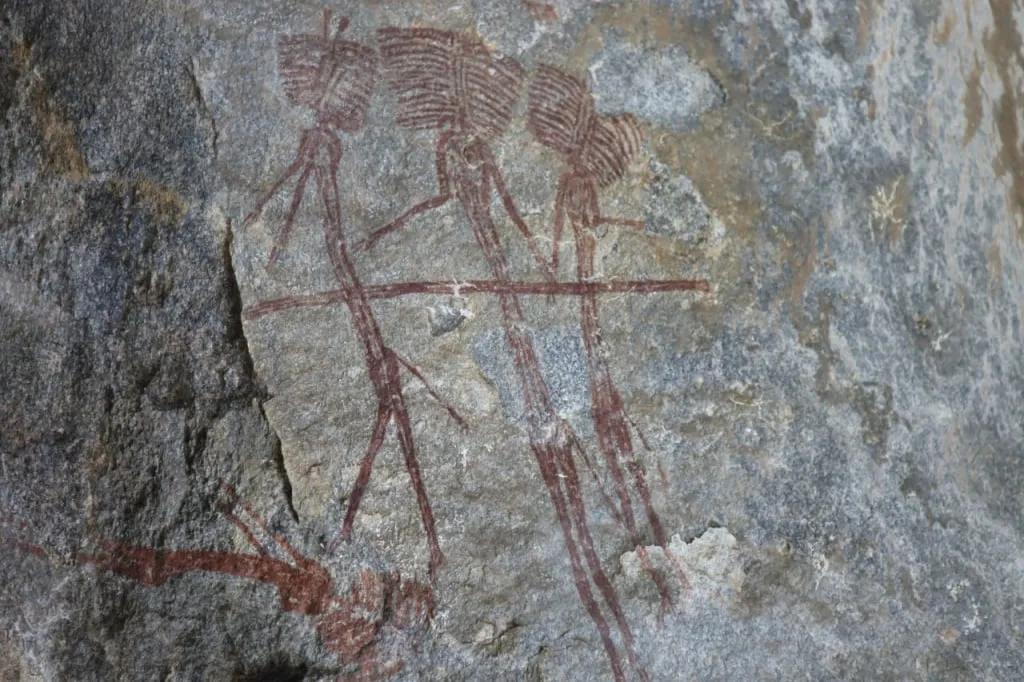
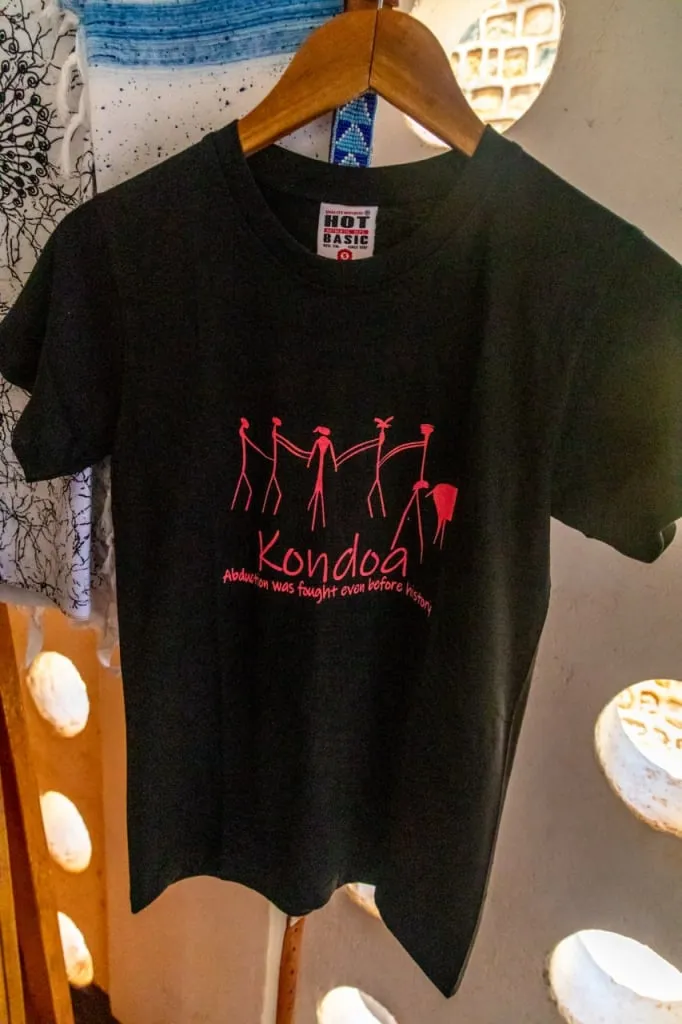

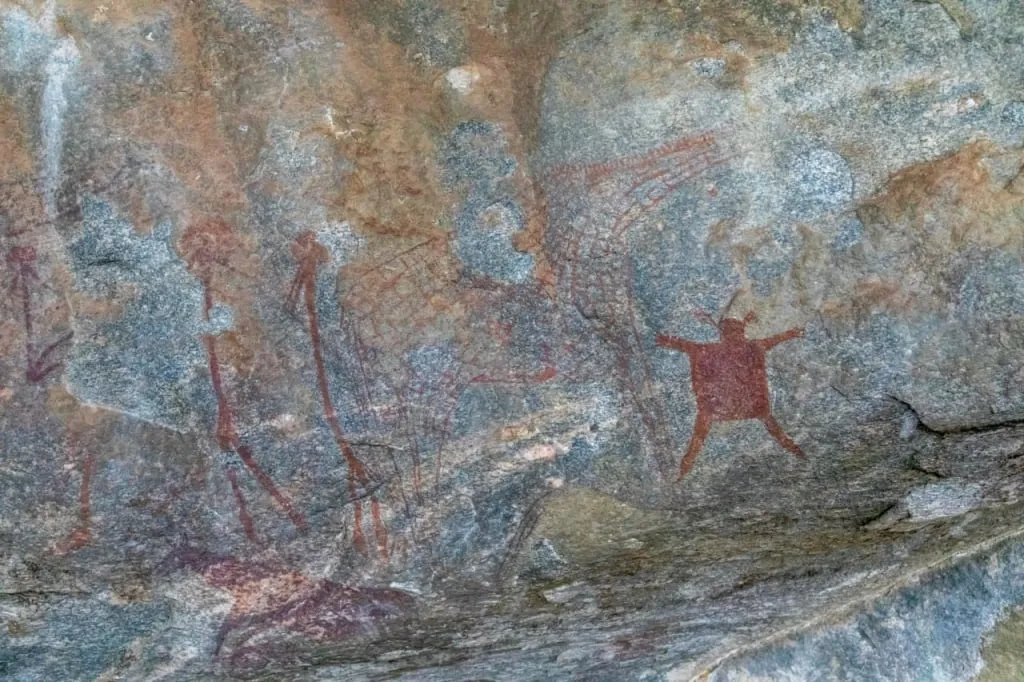
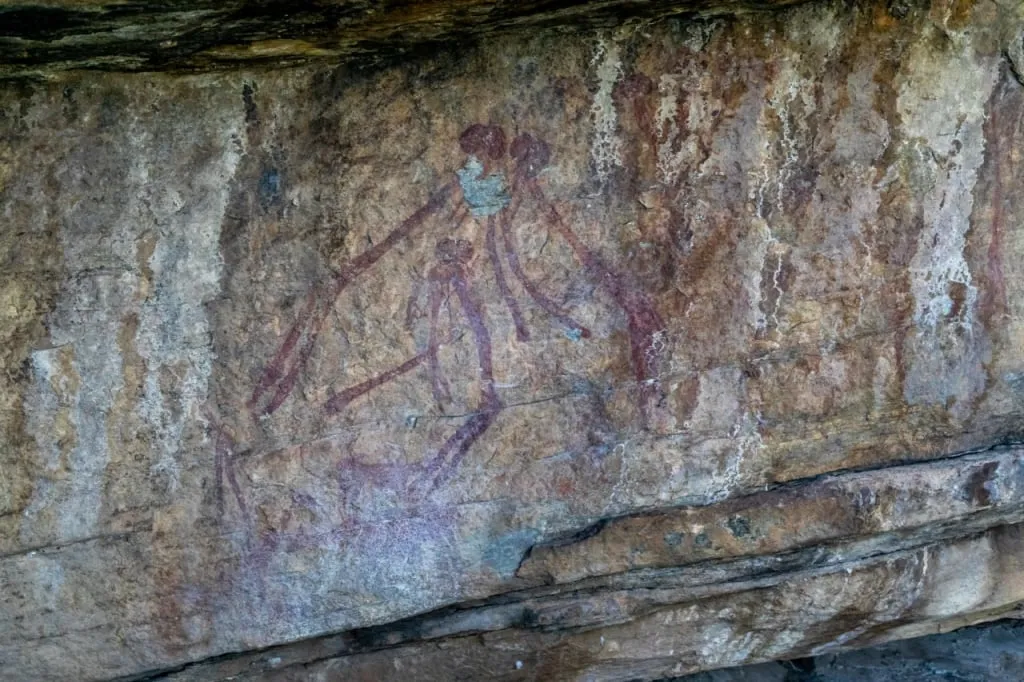
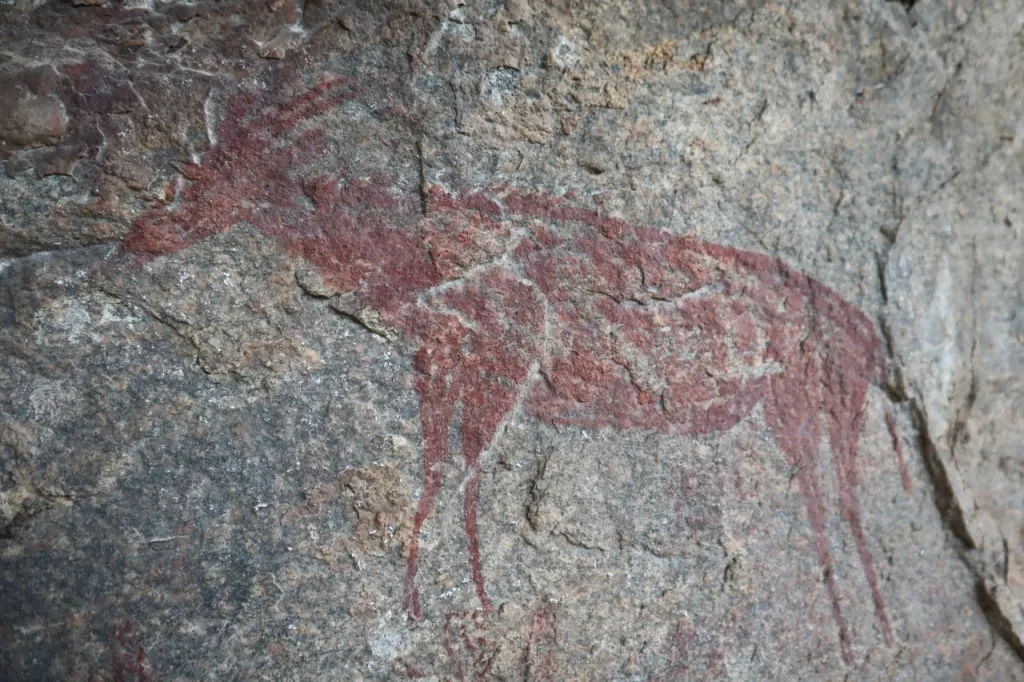
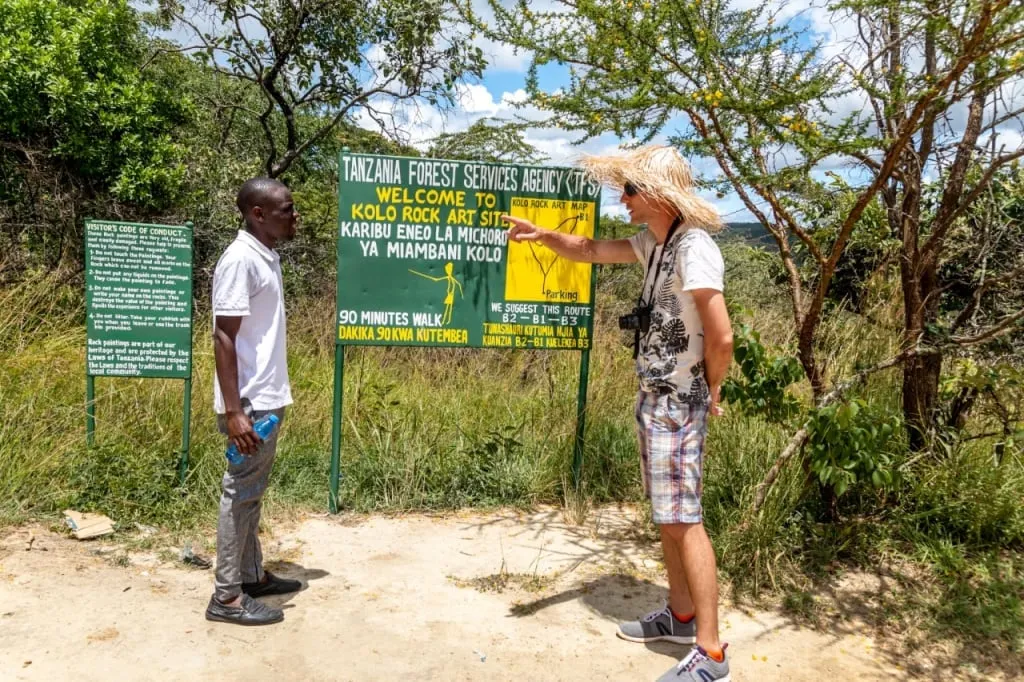
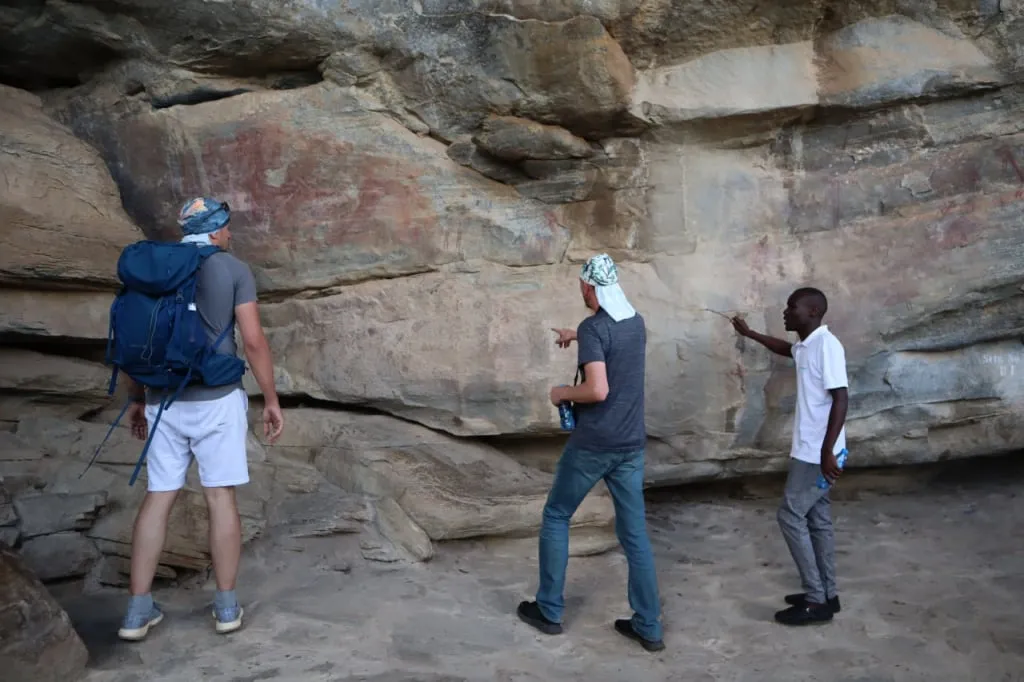




It is really interesting how they are both ancient remnants as well as a continued tradition of peoples living here. It distinguishes the site from other rock carvings and makes it more telling for ethnographic entusiasts such as myself